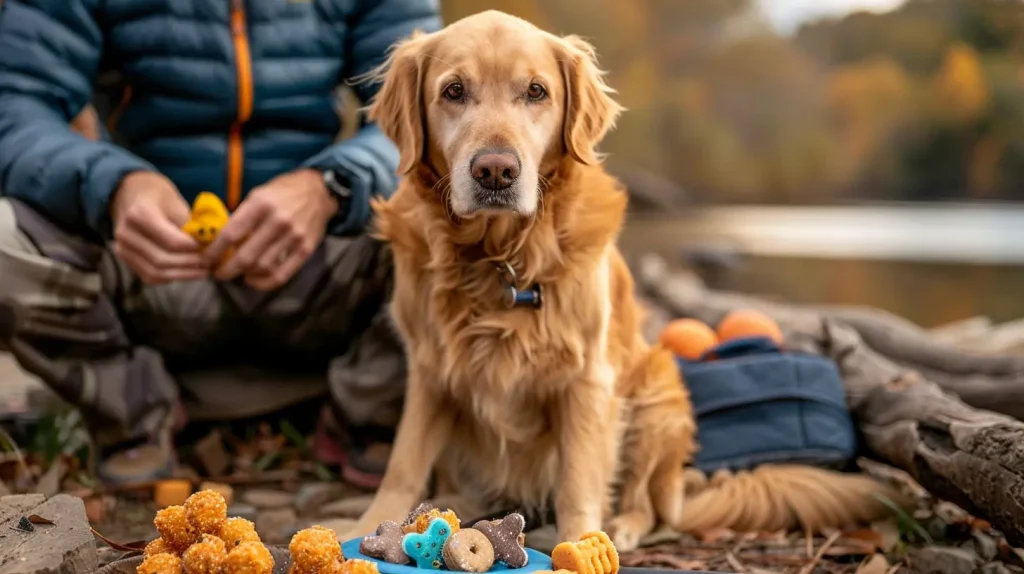Obedience Training for Specific Breeds: Adapting Methods for Different Temperaments

Understanding the Importance of Tailored Obedience Training
Every dog is unique, shaped by its breed and individual temperament. When it comes to obedience training, a one-size-fits-all approach often falls short. Recognizing the varying needs of different breeds ensures more effective training outcomes. Tailored training not only addresses behavioral issues effectively but also enhances the bond between the owner and the dog, creating a harmonious living environment.
Key Factors in Breed-Specific Training
To enhance your dog’s learning experience, consider the following:
- Temperament: Different breeds have distinct temperaments, which can significantly affect training approaches. For instance, Border Collies are known for their intelligence and high drive for work, making them excel in training that includes challenging tasks and puzzle-solving activities. In contrast, Bulldogs, characterized by their calm and relaxed demeanor, may do better with slower-paced training that incorporates plenty of rests and rewards after simple tasks.
- Energy Levels: A dog’s energy level plays a crucial role in determining training methods and schedules. High-energy breeds like Labrador Retrievers require vigorous activities such as agility training or fetch games to maintain their enthusiasm. Conversely, smaller breeds like Shih Tzus might respond better to gentle motivation involving shorter training sessions that keep their focus without overwhelming them.
- Intelligence: The cognitive capabilities of various breeds can impact how quickly they grasp commands. For example, breeds such as the Poodle and German Shepherd are known for their intelligence and can learn new commands quickly. However, a lack of mental stimulation can lead to boredom and behavioral issues. Therefore, incorporating interactive games and tasks can keep intelligent dogs engaged in their training.
Adapt, Don’t Force
Adapting your training methods to fit a dog’s characteristics can lead to a more successful relationship between owner and pet. Training that respects breed traits fosters trust and reinforces positive behavior patterns. Instead of forcing a dog to conform to a rigid set of training methods, understanding their needs and motivations will yield better results. For example, using positive reinforcement techniques, such as treats or praise, can be particularly effective for breeds that thrive on companionship and approval.
Ultimately, by embracing a customized training approach tailored to your dog’s unique traits, you can not only improve obedience but also create a deeper, more rewarding bond. Investing the time to understand your dog can lead to lasting changes, setting the foundation for a happy and well-behaved companion.
DISCOVER MORE: Click here to learn effective techniques

Choosing the Right Training Techniques for Your Dog’s Breed
When embarking on the journey of obedience training, it is essential to adapt your methods according to your dog’s breed characteristics and temperament. Not all dogs respond the same way to commands or training techniques, and understanding these differences is vital for fostering effective communication between you and your furry friend. As you explore various approaches to training, consider the following elements that play a crucial role in enhancing the learning experience for your dog.
Recognizing Behavioral Traits
One of the first steps toward successful obedience training is recognizing the unique behavioral traits associated with different breeds. Each breed has a distinct history, and these backgrounds often inform their instincts and actions. Here are some behavioral traits to consider:
- Pack Mentality: Breeds such as Golden Retrievers and Rottweilers typically thrive in environments where they can work alongside their human companions. Techniques that foster teamwork, like agility exercises, can reinforce their loyalty and eagerness to please.
- Independence: Terriers, known for their independent spirits, may require a different strategy. These breeds can be headstrong and might benefit from a “work for it” mentality, where they learn commands through play and mental challenges that engage their brains.
- Social Nature: Many herding breeds, like Australian Shepherds, exhibit highly social behaviors and can be positively reinforced by interactions with other dogs and people. Incorporating socialization into training can enhance their obedience and confidence.
Establishing Consistent Routines
Consistency is a cornerstone of successful training, particularly for breeds prone to anxiety or excitement. Establishing a regular training routine not only helps dogs understand what is expected of them but also creates a sense of security. Breeds like Beagles, known for their keen senses and hunting instincts, benefit from structured sessions that include varied activities to harness their energy and enthusiasm. On the contrary, a breed like the Bichon Frise, with its more relaxed demeanor, might respond better to gentler, less frequent training sessions that incorporate breaks and praise for meeting simple tasks.
Moreover, keeping training sessions engaging and varied can hold your dog’s attention and prevent frustration. This principle is especially important for high-energy breeds such as Boxers or Siberian Huskies. These dogs often require a combination of physical exercise and mental stimulation. Incorporating playtime into their training sessions, whether through fetch or interactive toys, can significantly improve their focus and retention of commands.
Remember, every dog has its own learning pace. Patience and understanding are essential as you tailor your approach to fit your dog’s specific needs. By acknowledging their behavioral traits and establishing a consistent routine, you can create a positive training atmosphere that not only teaches obedience but deepens the bond you share with your canine companion.
Understanding Temperaments: A Key to Effective Training
When it comes to obedience training for specific breeds, recognizing the individual temperament of each dog is crucial. Temperament can significantly influence how a dog responds to training methods, which is why tailored approaches are often more effective. Breeds such as border collies require stimulation and engagement due to their high energy levels, whereas bulldogs may exhibit a more relaxed demeanor and respond better to calm, consistent reinforcement.
Moreover, socialization plays an integral role in shaping a dog’s temperament. Early exposure to various environments, people, and other animals can enhance a dog’s adaptability. For instance, herding breeds thrive on social interactions and structured activities, making it essential to incorporate these elements into their training regiment.
Adapting Training Techniques Based on Breed
Each breed comes with its unique set of instincts and behaviors, informing necessary adjustments to training methods. For example, retrievers are typically eager to please, benefiting from a rewards-based training approach that uses positive reinforcement for desired behaviors. In contrast, breeds like the Chihuahua, known for their sometimes stubborn nature, may require more patience and gentle assertiveness during training.
Utilizing tools such as clickers, specialized toys, and treats can enhance training outcomes across various breeds. These aids help in communicating success during training sessions, thereby solidifying positive experiences for the dog. Consistently revisiting and reinforcing training techniques is essential as well, as dogs can experience fluctuations in their energy levels and focus.
The Role of Professional Guidance
For pet owners, seeking guidance from professional dog trainers can provide insights tailored to specific breeds. Experts often possess the knowledge to identify behavioral pitfalls and implement practical strategies that align with a dog’s temperament. This personalized approach can bolster the dog’s adaptability to commands and general behavior, making the training process more enjoyable for both the dog and the owner.
Ultimately, the aim of obedience training is to forge a solid bond between the dog and owner, enhancing not only understanding but also trust. By customizing training techniques to align with the individual dog’s temperament, the journey becomes smoother, fostering a harmonious relationship that enriches both the dog’s and owner’s lives.
| Training Technique | Benefit |
|---|---|
| Positive Reinforcement | Encourages desired behaviors effectively. |
| Tailored Approaches | Addresses the unique temperament of each breed. |
| Professional Training | Provides expert insight and custom solutions. |
DIVE DEEPER: Click here to learn about the importance of positive training in dogs
Incorporating Breed-Specific Challenges
Each dog breed comes with its own set of challenges when it comes to obedience training. Understanding these breed-specific issues can significantly enhance your training strategy. Some breeds are notorious for certain behaviors, and acknowledging these can help owners prepare and adapt their methods accordingly.
High Prey Drive
Many breeds, such as Greyhounds and Pointer breeds, have a strong prey drive, making them easily distracted by small animals or fast-moving objects. In these cases, incorporating focus training techniques can be particularly beneficial. Exercises that promote attention towards the trainer, such as “look at me” commands or clicker training, can help redirect their focus away from distractions. Utilizing these techniques consistently throughout their training sessions can also prevent unwanted chasing behavior.
Fear-Based Reactions
On the flip side, breeds like Chihuahuas and other small breeds may exhibit fear-based reactions, especially in unfamiliar settings or around larger dogs. Tailoring your training approach to create a safe space can significantly lower anxiety levels and improve responsiveness to commands. Utilizing positive reinforcement could ease their fears. For instance, rewarding them for calmly exploring their surroundings can build their confidence, creating a more willing participant in training sessions.
Destructive Behavior
Some breeds such as Labrador Retrievers are known for their tendency towards destructive behaviors when left alone or insufficiently stimulated. Engaging in obedience training that incorporates mental stimulation can reduce these tendencies; using puzzle toys or interactive feeding can keep these intelligent dogs busy. Integrating obedience commands like “leave it” or “stay” while they play can reinforce good behavior and prevent destructive actions when you’re not around. Establishing clear boundaries and practicing consistency is vital to break the cycle of unwanted behaviors.
Adapting Training Approaches
As you consider these breed-specific challenges, it’s also essential to leverage the strengths of your dog’s breed. For example, working dogs, such as Border Collies or Belgian Malinois, thrive on having a job to do. Incorporating tasks that tap into their natural instincts, like herding or fetching, can make obedience training far more engaging and effective. Additionally, offering them leadership roles during training, such as leading you on a trail, can reinforce their sense of purpose and responsibility, ultimately leading to better discipline.
Another important aspect to consider is the social learning ability of different breeds. Breeds like Doberman Pinschers and German Shepherds often excel when trained in a group setting. Exposing them to group classes not only provides socialization but can also enhance their learning through observation of other dogs. Watching peers respond to commands may encourage a dog to emulate their behavior, reinforcing the training process and fostering a sense of community.
Overall, adapting your obedience training methods based on the unique traits and challenges of your dog’s breed is crucial. Exploring the intricacies of their behavioral patterns provides a roadmap to successful training that promotes good behavior, builds confidence, and strengthens the bond between you and your pet.
DISCOVER MORE: Click here to learn about positive training techniques
Conclusion
In the world of dog ownership, understanding that obedience training is not a one-size-fits-all solution is paramount. Different breeds exhibit unique temperaments, behaviors, and challenges that require tailored training approaches to facilitate effective learning. By recognizing the characteristics of your dog’s breed—whether they possess a high prey drive, fear-based reactions, or tendencies toward destructive behavior—you can modify your training methods to suit their specific needs.
The integration of breed-specific challenges into your training regimen not only fosters more successful outcomes but also deepens the bond between you and your canine companion. Utilizing techniques such as focus training for easily distracted breeds or creating a safe learning environment for anxious dogs can significantly improve their obedience and overall well-being. Moreover, tapping into the natural instincts and strengths of breeds—like giving working dogs purposeful tasks—enhances their engagement and effectiveness in training sessions.
Ultimately, the key to successful obedience training lies in patience, understanding, and adaptation. Every dog has the potential to thrive with the right guidance, so take the time to explore different training methods and find the most suitable ones for your furry friend. As you navigate through this journey, remember that fostering a positive, supportive environment will yield the best results, not just in training but in building a lifelong partnership with your dog. For those eager to delve deeper into this subject or seek additional resources, numerous courses and community groups across the U.S. cater specifically to breed-specific training needs, ensuring that you are well-equipped to train effectively.



